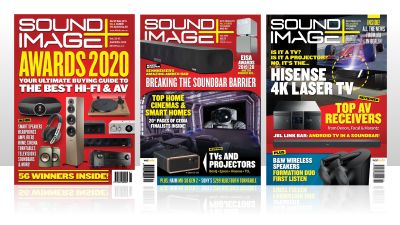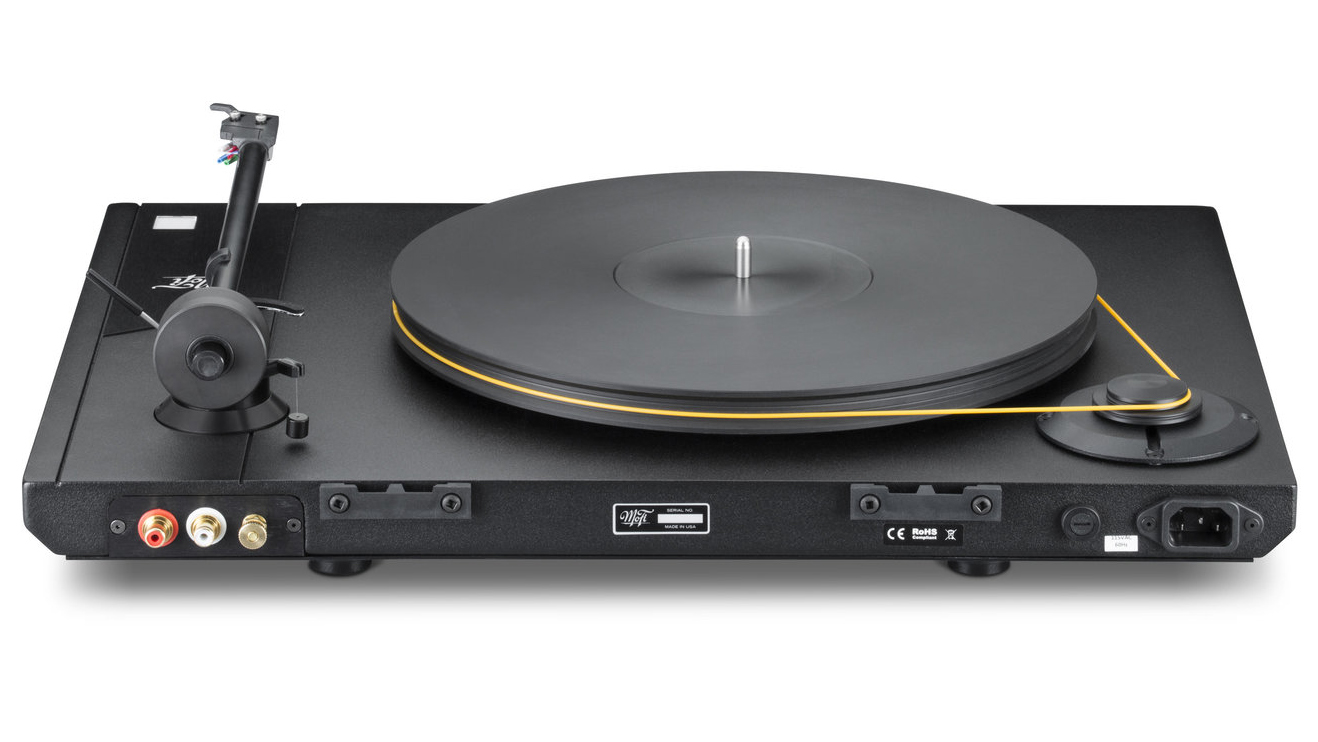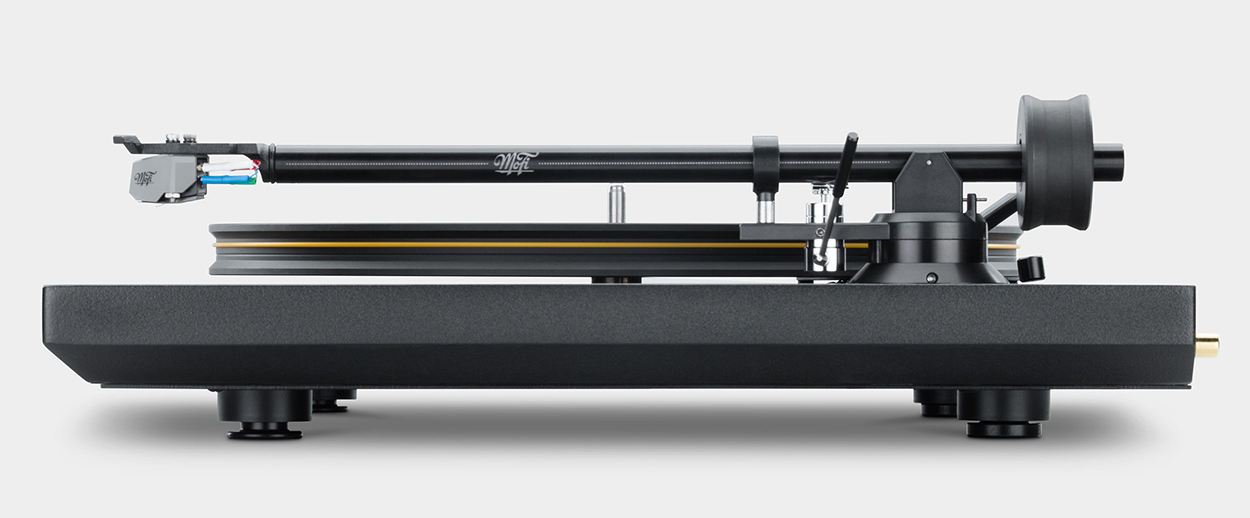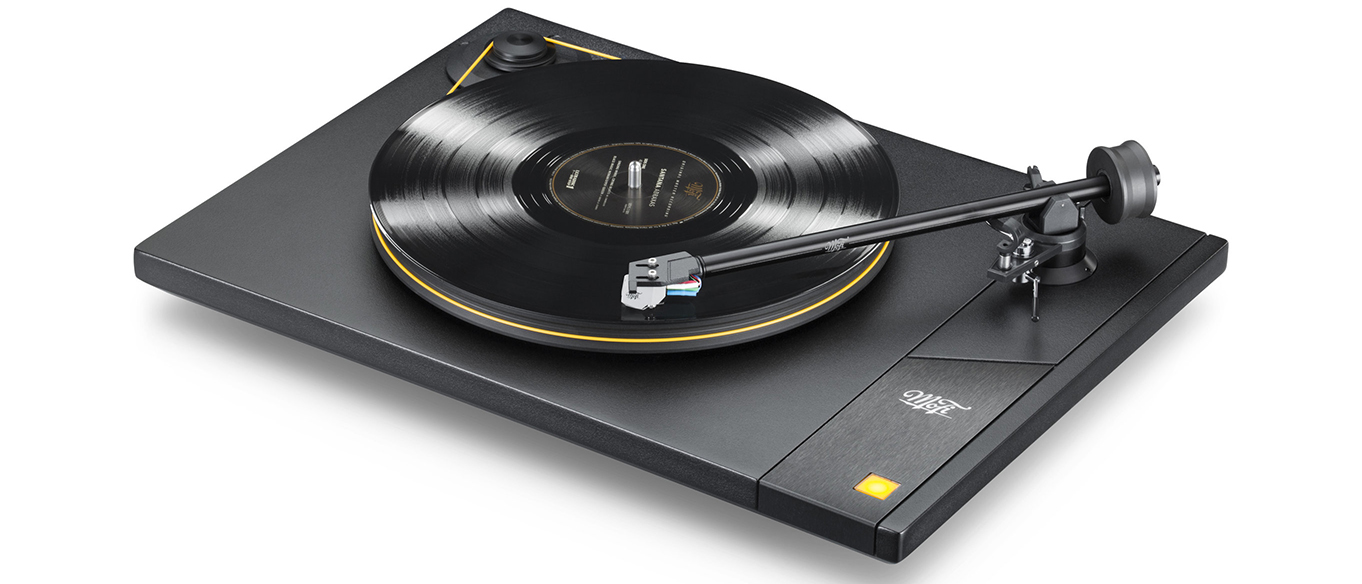Sound+Image Verdict
The Mo-Fi Electronics StudioDeck Plus produces exceptionally clear audio with low surface noise, and does so in a particularly stylish and sleek package. While there's no built-in phono preamp, everything that is included is masterful.
Pros
- +
Exceptional clarity
- +
Low surface noise
- +
Attractive deck
Cons
- -
No built-in phono stage
- -
Dark lid presents a quandary
Why you can trust What Hi-Fi?

This review originally appeared in Sound+Image magazine, one of What Hi-Fi?’s Australian sister publications. Click here for more information on Sound+Image, including digital editions and details on how you can subscribe.
Back when music came on shellac, it was de rigeur for record labels also to produce record players. RCA Victor begat the Victor Talking Machine Company, the Columbia Phonograph Company (software) begat the Columbia Graphophone Company (hardware), and so on.
In more recent times the trend has gone the other way, with hi-fi companies starting their own record labels, sometimes as ‘vanity’ projects, or simply to have a chance to control music through the whole chain from creation to reproduction.
So the announcement a few years back by highly respected audiophile recording label Mobile Fidelity Sound Labs that it would be creating a Mo-Fi Electronics range of turntables, cartridges and phono stages (with DAC and amplifiers in development) was not entirely unprecedented.
But it is nevertheless an intriguing proposition. Mo-Fi’s software output is impeccably curated – its GAIN mastering techologies and Ultradisc one-step pressing deliver the unsurpassed ultimate in vinyl quality. So has the company applied the same diligence to its hardware development?
- Looking for a new turntable? Here are the best record players you can buy.
Equipment
This is the lesser of the two decks from Mo-Fi Electronics, which currently offers the UltraDeck and the StudioDeck, each with a few variations available. They share the same arm, bearing and 300rpm isolated AC synchronous motor, the main differences on the Ultradeck being a more sophisticated plinth with additional layers, silver rather than copper wiring in the tonearm, and a far heavier thicker platter – nearly doubling up the StudioDeck’s 1.76kg to just over 3kg. Both of these platters are made of Delrin, a DuPont polymer resin which combines high strength and stiffness with low-friction and high-wear resistance.
The model under review is specifically the StudioDeck Plus, the ‘Plus’ indicating the inclusion of the StudioTracker cartridge. Our review model also featured Mo-Fi’s Super HeavyWeight record weight to go on top. You can save £199 / $199 / AU$369 by running the StudioDeck Plus without the record weight – but the claims for its merits are significant.

The Super HeavyWeight Noise Dissipation Record Weight, to use its full name, claims abilities beyond simply better coupling the record to the platter: “drains groove noise away from your stylus, audibly improving clarity and impact... eliminates resonance, elevates resolution, and enhances stability... greater dynamics, firmer instrumental foundations, and better definition.” While it’s a lovely thing and certainly adds mass to the system, we can’t claim to have noted its reported powers when comparing playback with and without – including digitally recording these to make instantly switchable A-B comparisons.
The latest hi-fi, home cinema and tech news, reviews, buying advice and deals, direct to your inbox.
The StudioDeck itself is an attractive deck, designed in collaboration with two industry notables: primarily Allen Perkins of Spiral Groove turntables and lmmedia (a US distributorship), but also Michael Latvis, a vibration isolation expert who develops systems for “audio, commercial aircraft, military aircraft, and missile defense systems” – Levin contributed the decks’ special anti-vibration feet, as well as that Super HeavyWeight clamp.
The tonearm is a 10-inch straight aluminium design with a gimbal bearing (quite the history, gimbal bearings – they stabilised ink pots in Byzantium, incense bowls in Han-dynasty China, compasses in 15th-century navigation, and today everything from camera rigs to satellites, as well as tonearms), while the cartridge supplied was, as noted, Mo-Fi’s StudioTracker, a 6.4g polymer-shelled design with an elliptical-profile stylus and its twin magnets aligned in parallel with the stereo record grooves, to achieve the best possible channel separation.
Mo-Fi’s turntables are manufactured in the United States, the cartridges are built in Japan, and should a future upgrade arise, the StudioDeck can accommodate either of Mo-Fi’s higher-level cartridges just as easily.

Performance
Set-up was pleasingly straightforward, the cartridge already in place, requiring only the anti-skate weight to be hooked into place (bring your best glasses) and the main counterweight to be rolled up the arm until weightlessness is achieved, and then a little more until the stylus force gauge registers the required grammage, here 2g.
To do this you’ll need a stylus gauge, which Mo-Fi assumes you will own, as none is included with the turntable; we used one that came with a (cheaper) Thorens turntable, as well as its alignment protractor to confirm the accurate mounting of the cartridge.
Assembly completed we loaded side six of Satyagraha by Philip Glass for a gentle opener. We dropped the needle before we had switched our amplifier over to the phono stage, so we rushed to do so – but were met with silence. We turned it up, and up again, finally hearing some low vinyl surface noise.
Then a set of pulsing flutes burst onto the sound stage at great level and absolute reality, joined shortly by the New York City Opera Chorus presented with a clarity and depth as to be entirely hypnotic. It was a fine first burst to introduce the deck’s characteristics of extremely low surface noise (given a clean disc) and tight timing.
The trick was repeated with Band on the Run (the excellent 1997 ‘EMI 100’ pressing), its opening a tonal delight of zinging treble and edgy guitars, the twinned vocals perfectly formed and centred in their central spot with a recorded acoustic presenting them at a little distance, rather than poking forward in the mix – a highly accurate delivery from the outermost extremity of the arm’s motion.
A minute later in the Band on the Run chorus, the extravagantly wide reverb could be heard falling away for a full second even over the massed jangle beneath. This open ceiling for sound is a remarkable trait, a clarity beyond the smoothed-off tone of many turntables at or below this price; the resulting liveliness is delightful. Bass handling was declared by the size and solidity of McCartney’s bass on Mrs Vanderbilt and its nuances on Bluebird (under tinkling bells and clacking blocks), while Howie Casey’s saxophone on both tracks was blissfully brassy in all the right places.
This revealing nature was less kind to poor and dirty vinyl, but that’s true of all good hi-fi; we’d recommend a vinyl cleaning system as a secondary purchase with any turntable.

The darkened-glass dust cover presents a quandary for the proud new Mo-Fi owner, as we realised after finally disconnecting from the sound to look at the platter a-spinning.
Do you drop the dust cover for best vinyl protection and improved fidelity by way of reduced acoustic transmission? Of course, but then all you can see is a black Perspex box with a glowing amber square shining from within at the front right corner. Or do you say – to hell with that, I want to see the orange belt going around!
We suspect that not only will the latter camp outnumber the former, but that many may dispense with the dust cover altogether when visitors come a-calling. The StudioDeck looks just too good to hide. Even we chose to leave the lid up, otherwise its surface silence and impeccable tone had us actually forgetting we were listening to vinyl until the big bump at the end of the record. And where’s the fun in that?
One question we couldn’t answer, as our usual micrometer was in a locked-down office, was whether the spindle is unusually narrow; many LPs were a little loose around it.

Verdict
The StudioDeck’s qualities are a testament to both the track record of Mo-Fi in pursuing the highest levels of vinyl software, and those engineers it has enlisted to create this expanding range of hardware. How must the higher-level Mo-Fi deck and cartridges perform, we wonder, and how would this one sound through the Mo-Fi phono stages designed by revered bearded and late lamented British audio legend Tim De Paravicini?
Our ears have been thoroughly moistened by this first taste. This turntable is pretty enough to be spot-lit for display, while itself spotlighting all the music placed on its platter, a tight tracker of the information in the groove, unusually open in its top-end delivery, with bass that is terrific and taut in its support.
Sound+Image is Australia's no.1 mag for audio & AV – sister magazine to Australian Hi-Fi and to the UK's What Hi-Fi?, and bestower of the annual Sound+Image Awards, which since 1989 have recognised the year's best hi-fi and home cinema products and installations. While Sound+Image lives here online as part of our group, our true nature is best revealed in the print magazines and digital issues, which curate unique collections of content each issue under the Editorship of Jez Ford, in a celebration of the joys that real hi-fi and high-quality AV can bring. Enjoy essential reviews of the most exciting new gear, features on Australia's best home cinemas, advice on how to find your sound, and our full Buying Guide based on all our current and past award-winners, all wrapped up with the latest news and editorial ponderings. Click here for more information about Sound+Image, including links to buy individual digital editions and details on how best to subscribe.


